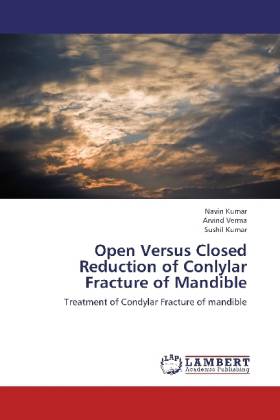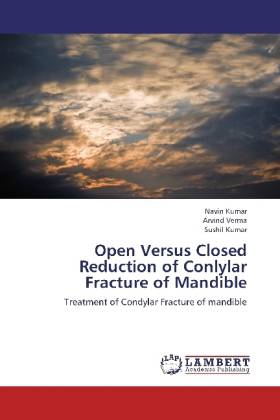
Je cadeautjes zeker op tijd in huis hebben voor de feestdagen? Kom langs in onze winkels en vind het perfecte geschenk!
- Afhalen na 1 uur in een winkel met voorraad
- Gratis thuislevering in België vanaf € 30
- Ruim aanbod met 7 miljoen producten
Je cadeautjes zeker op tijd in huis hebben voor de feestdagen? Kom langs in onze winkels en vind het perfecte geschenk!
- Afhalen na 1 uur in een winkel met voorraad
- Gratis thuislevering in België vanaf € 30
- Ruim aanbod met 7 miljoen producten
Zoeken
Open Versus Closed Reduction of Conlylar Fracture of Mandible
Treatment of Condylar Fracture of mandible
Navin Kumar, Arvind Verma, Sushil Kumar
Paperback | Engels
€ 65,45
+ 130 punten
Omschrijving
The incidence of fracture involving the mandibular condyle varies throughout the literature and is influenced by factors such as age, geographic location, and socioeconomic level of the study population. A thin neck of mandibular condyle is an area of anatomical weakness and gets easily fractured in response to any direct or indirect trauma to the mandible. Had it not been so, all the forces of trauma would have been transmitted to the middle cranial fossa. Therefore mandibular condyle acts as a shock absorber in preventing the intracranial injuries. The study is aimed at comparing outcome of closed and open reduction of Condylar fractures.
Specificaties
Betrokkenen
- Auteur(s):
- Uitgeverij:
Inhoud
- Aantal bladzijden:
- 72
- Taal:
- Engels
Eigenschappen
- Productcode (EAN):
- 9783659183843
- Verschijningsdatum:
- 1/01/2013
- Uitvoering:
- Paperback
- Afmetingen:
- 150 mm x 220 mm
- Gewicht:
- 118 g

Alleen bij Standaard Boekhandel
+ 130 punten op je klantenkaart van Standaard Boekhandel
Beoordelingen
We publiceren alleen reviews die voldoen aan de voorwaarden voor reviews. Bekijk onze voorwaarden voor reviews.









